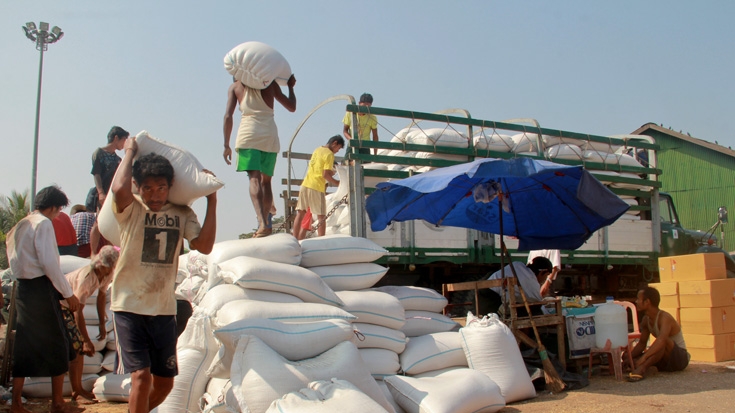KEY FINDINGS
- There are good market prospects to accommodate higher rice exports from Myanmar over the next 10-15 years. China is becoming a large net importer of Myanmar rice, and the European Union has opened its markets for duty free imports from Myanmar.
- Strong competition from other exporters in the region – Thailand, Vietnam and Cambodia - and constantly rising demand for the higher-quality rice has put pressure on Myanmar’s rice sector which has been focused on low-quality export markets.
- The actual rice export has reached only about 1.3 million tons over the past years that lags behind the government’s target of exporting two million tons of rice this year and four million tons by 2020.
- The most acute problems are low productivity and poor rice quality at the farm level. The average paddy yields of 2.5 tons per hectare are only half of those realized by other exporters in the region.
- The milling sector operates with obsolete processing units that causes about 15-20 percent losses in quality and quantity during the milling.
- Yangon Port, the main export gate, is small, outdated and with limited capacity during monsoons. The export procedure costs are some of the highest in the region.
- Although many barriers to agricultural trade have been abolished, the private sector remains cautious about uncertainties in government actions.
RECOMMENDATIONS
In the short term
- Provide more accurate market information to participants on production, consumption, exports, and prices in order to allow a smooth functioning of the rice market and enable more informed policy decisions.
- Lift the rules limiting the maturity of commercial loans to 12 months, and broaden the type of assets that can be pledged as collateral in accessing credit.
- Allow direct foreign investment to milling, warehousing and trading and remove the government approval from the investments made through joint ventures.
- Avoid holding large government-owned stocks and using minimum farm prices in order to keep farm production costs competitive and prevent increases in food prices.
- Enhance the predictability of trade policy. Export bans need to be avoided. Once issued, export licenses should not be canceled or subject to higher taxes.
- Lower port charges and reduce export procedure costs. All export procedures and port costs should be revised with a view toward improving the competitiveness of Myanmar rice.
In the long run
- Update the existing seed management system and prepare a new national seed policy to make the seed industry more competitive. New rice varieties with higher export potential need to be adopted.
- Strengthen public agricultural extension services and engage with the private sector to deliver appropriate and farmer-responsive technology.
- Improve water management and engage farmers into decision making in order to respond to market opportunities and increase the rice production.
- Reduce transport costs by investing in farm-to-market roads.
- Strengthen land tenure security and increase investments into land development, transfer, and consolidation that are needed for farm commercialization.
